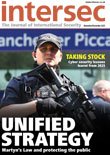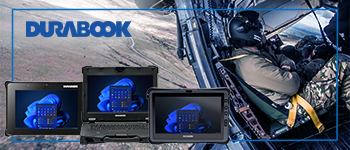Screening for vehicles
Colin Williams explores how the mirror on a stick of old has been superseded by more effective ways to keep key facilities safe
The fast, efficient, effective checking of the underside of vehicles is a requirement at many different sites, as part of the general screening process. These include sea port, airport and border installations, as well as critical national infrastructure establishments and sporting events.
Threat detection techniques at airports, in particular, must advance to stay ahead of the increasing sophistication of terrorists and smugglers. No single solution will achieve this, hence security layering is the approach taken. One stage of this is checking the underside of vehicles: a mandated requirement in the UK. While the area of under vehicle surveillance has seen recent advances, widespread adoption is slow. This is despite the pressure on high-volume traffic areas within airports to maintain or improve efficient vehicle throughput, minimising the delay to staff and customers. Something that in turn must be effectively balanced against security and safety needs.
For many years, the most commonly used inspection technique has involved using one of the many designs of mirrors mounted on sticks, where the security team uses the mirror to manually view the underside of vehicles. The limitations of this method are numerous and all too obvious to the user: areas are often visually blocked as typically only the edges of the underside can be seen with any clarity; the mirrors are too small and in poor condition; and the operators are unable to interpret the reflected image, particularly in poor weather or low-light conditions. The result is that total under vehicle surveillance is not achieved.
While this method is relatively safe for the operator to use when drugs or other illegal inert goods are the anticipated targets, the operator-to-vehicle proximity required causes obvious safety concerns should a potential bomb threat exist. This traditional approach is also inefficient cost wise as an extra member of security staff is required to physically attend the inspection zone in order to conduct mirror searches. More modern alternatives can be operated by any staff with onsite networked computer access.
Another method of providing a complete view of the underside of the vehicle is through the installation of an inspection pit at the checkpoint. This involves a potentially large construction project during which the chamber, complete with access, must be sunk into the ground. However, the inspection pit fails to deliver many advantages over mirrors on sticks – particularly for the operator in the event that explosives may be present.
Regardless of the method used, in situations where an operator needs to physically view the underside of the vehicle there will always be issues of safety and delays. This results in either the implementation of checking quotas, so that not every vehicle is checked, or insufficient time to properly screen vehicles. In an unpredictable and time-pressured environment, the risks are serious.
The solution to these issues lies with developing technology. The first computer-based, automatic Under Vehicle Inspection System (UVIS) – called UVSS (Under Vehicle Surveillance System) – was developed by BDL Systems (now Chemring Technology Solutions) in the late eighties and provided medium resolution, black and white images. Since then, significant advances in technology have enabled the development of more effective, full-colour systems.
Within the products now available worldwide, three alternative camera technology options are at hand. The least sophisticated uses video CCTV cameras, either singly or in multiples, to present moving images to the operator which are stored and reviewed using traditional VCR controls eg play, pause, rewind, stop.
The next solution employs area scan cameras, typically monochrome, that build up images by stitching together wide strips in the same way that a panoramic photograph is produced. However, this process relies on image edge overlap, which can compromise the integrity of the image, and in the worst case scenario could result in anomalies being missed due to parts of the image being discarded during the stitching process.
The third option is line-scanning cameras. This is the next step up from area scan-based solutions and works rather like a photocopier, rapidly scanning in a narrow strip from one side of the vehicle’s underside to the other. This is able to deliver a single continuous, error-free image of the underside of the vehicle in question. The full-colour, high-resolution image means that any anomalies easily stand out. The major benefit of employing computer-based UVIS over mirrors on sticks is that all vehicles can be checked and a complete view of the underside of those vehicles is presented for review. This gives the security team 100 percent coverage for the underside of every vehicle passing through the control gate.
By integrating the UVIS with an Automatic Number Plate Recognition (ANPR) system, individual vehicles can also be linked and referenced to their under-chassis scans. This allows rapid recall of the scan captured from a vehicle’s previous visit to the security check site and assists the operator in positive anomaly identification. UVIS and ANPR systems can also prove invaluable to enhancing security effectiveness and will support post-event reviews. The effective UVIS system will also provide the ability to mark ‘black listed’ vehicles by registration, allowing security teams to instantly identify these vehicles should they attempt to transit the security post.
Whichever UVIS is used, it is important that the operation is overt; this not only gives a sense of safety assurance to visitors and staff at facilities, but also provides a visible deterrent to those who might consider smuggling contraband or concealing a bomb.
In 2014, Gatwick Airports Limited introduced a major upgrade investment in its road-to-airside security gates. A critical element of this project was to replace the mirror on a stick approach with a UVIS system both to improve detection rates of prohibited articles and explosives, and to allow vehicles to access airside more effectively and efficiently.
As as one of the fastest growing airports in Europe, maintaining the flow of traffic airside to support operations was key to Gatwick Airport. However, the necessary security screening of those vehicles would inevitably incur delays.
In addition, the airport security team determined that it could provide a more cost-effective service if it consolidated the access points. The airport could then invest more in security equipment and staff at a single site, rather than splitting the budget between multiple security sites. With all traffic now entering through a single point, the airport needed a solution, which would continue to allow vehicles to enter the airport without undue delay, while ensuring security screening was conducted to the mandated standard.
VehicleScan systems are deployed on four lanes, each with Automatic Number Plate Recognition (ANPR) cameras. This screening facility handles the high volume of airport traffic comprising staff, maintenance and catering vehicles. All vehicles entering Gatwick’s airside areas, including articulated lorries, coaches and vehicles with trailers that require airside access are scanned and their information is then stored for future reference. This allows VehicleScan to maintain a detailed database of airport vehicles and to compare new scans with previous images to alert the operator to any changes on a vehicle’s underside.
By integrating UVIS with an ANPR system, individual vehicles can also be linked to their under-chassis scans. This is invaluable in increasing security effectiveness and supporting post-event reviews, as well as identifying blacklisted vehicles, such as contractors trying to gain access to the site when their pass has expired. Indeed, Gatwick’s system uses ANPR to cross check each vehicle against the airport security database to ensure they are approved to access the airfield.
Not only does the ANPR-enabled system allow Gatwick Airport to establish which vehicles are on site at any point in time, it also provides data that’s used to monitor vehicle queue times and which can then be used as evidence in cases where compensation claims are made for excessive wait times at the security gates. The system links into the airport’s existing vehicle database to allow real-time searching for the vehicles on site with the date and time of when they entered.
The networked capabilities of the system allow flexibility in the staffing levels required. During peak times each lane will be operated by multiple personnel, while during quieter periods a single operator, typically a supervisor, can view the scans on every lane.
VehicleScan instantly shows a complete underside image to the operator as the vehicle passes the scanner. As this is far more comprehensive than any traditional search using a mirror, it increases the probability of detecting threat packages. Even before the vehicle has stopped in the search bay, the operator can start checking the image for any suspicious objects. There are also major benefits in maintaining vehicle throughput.
In the trials phase of the Gatwick deployment, the search duration was reduced from around two minutes per vehicle with the traditional mirror search to 15 seconds using the VehicleScan system.
While automated anomaly detection is now possible, there will always be a need for a human in the loop. Effective operator training and experience is therefore essential, as it is not the system which spots potential threats, but the person. Over time, operators become increasingly adept at identifying a range of suspicious objects, ultimately providing a robust way of improving security. As with all technology, it is only as good as the person using it but these technological advances mean that airport security can be significantly enhanced.
Colin Williams is Product Manager at Chemring Technology Solutions. In his current role he brings a large amount of experience in site security. He specialises in under vehicle scanning technology and equipping vehicle search teams globally.









